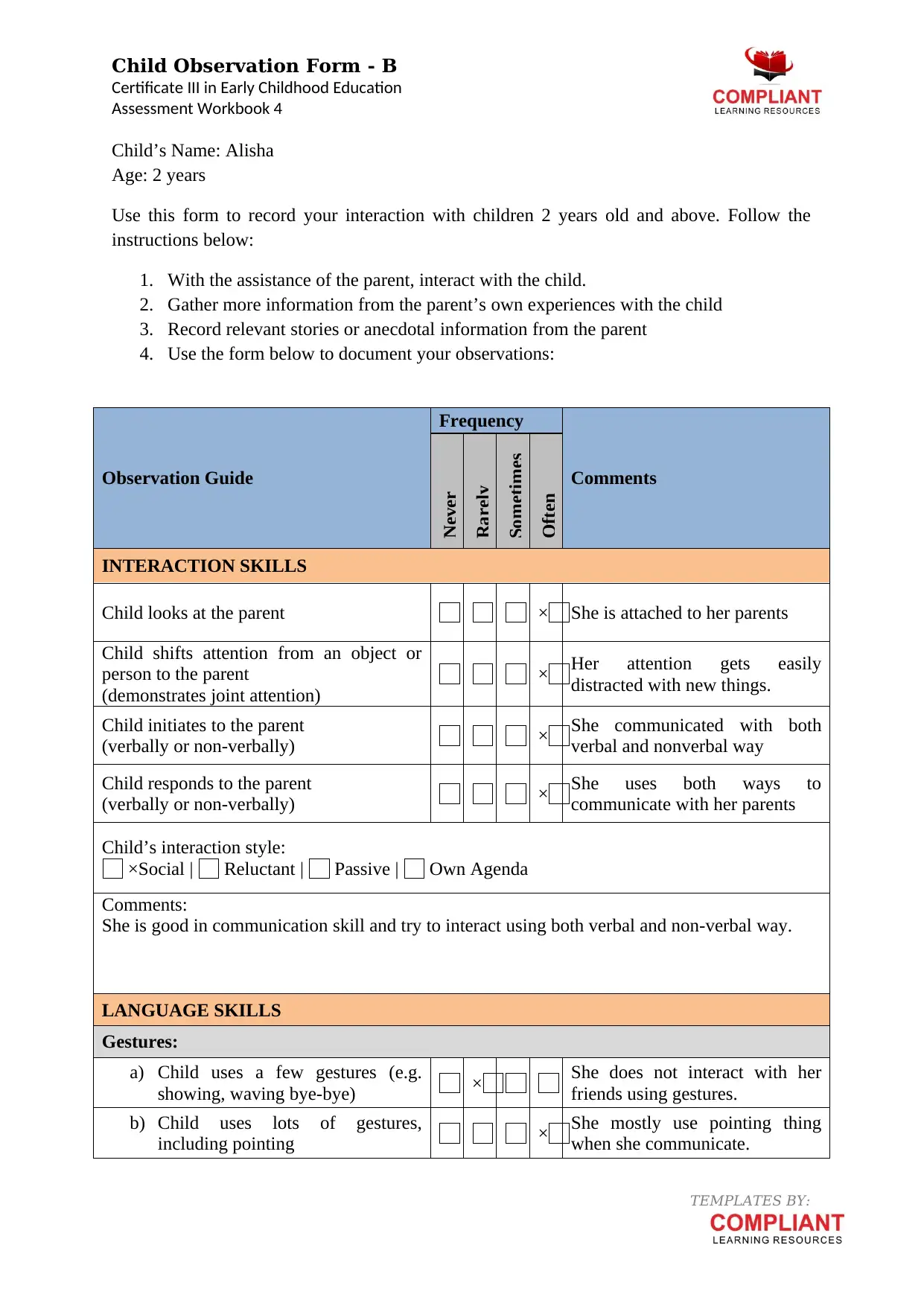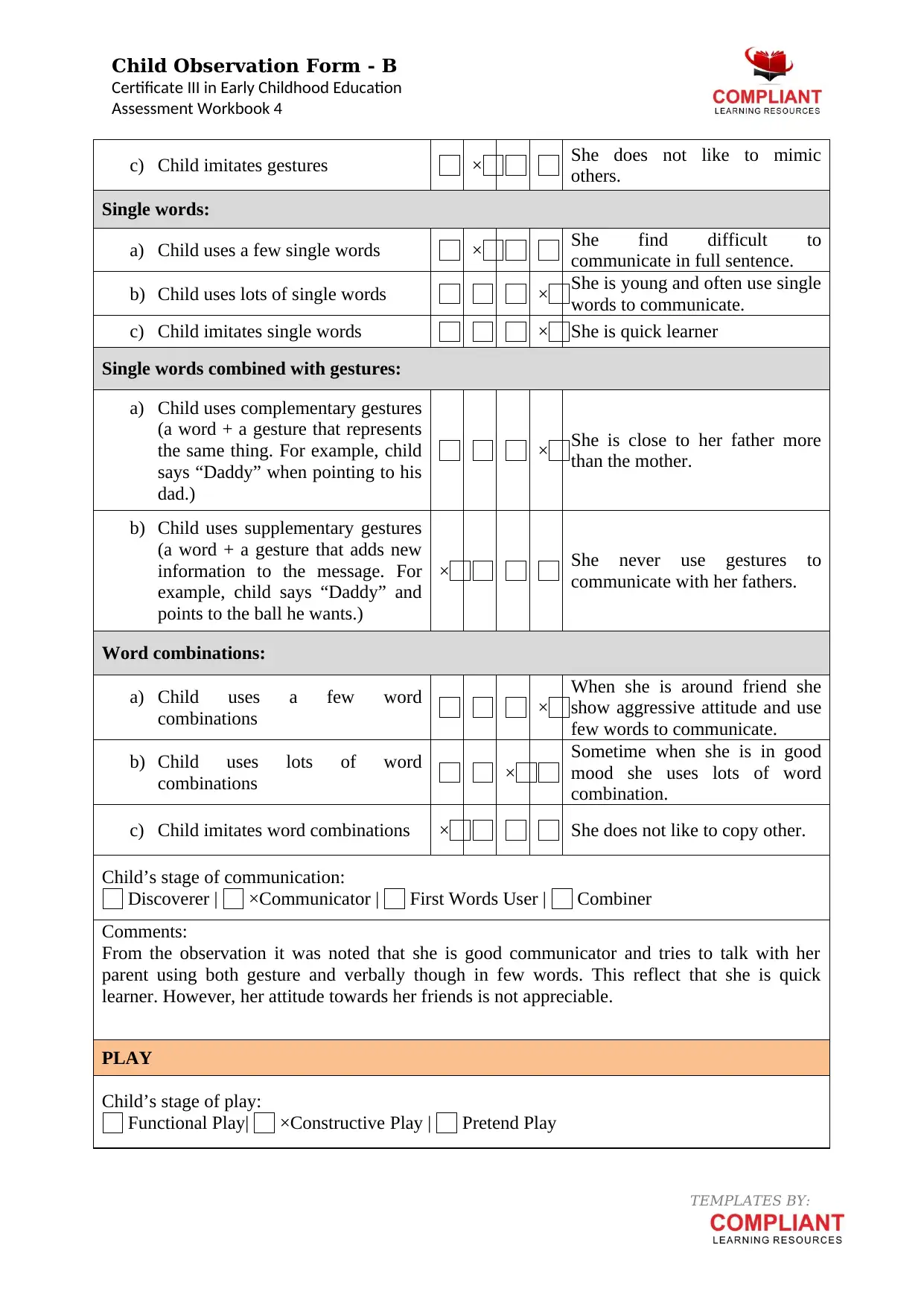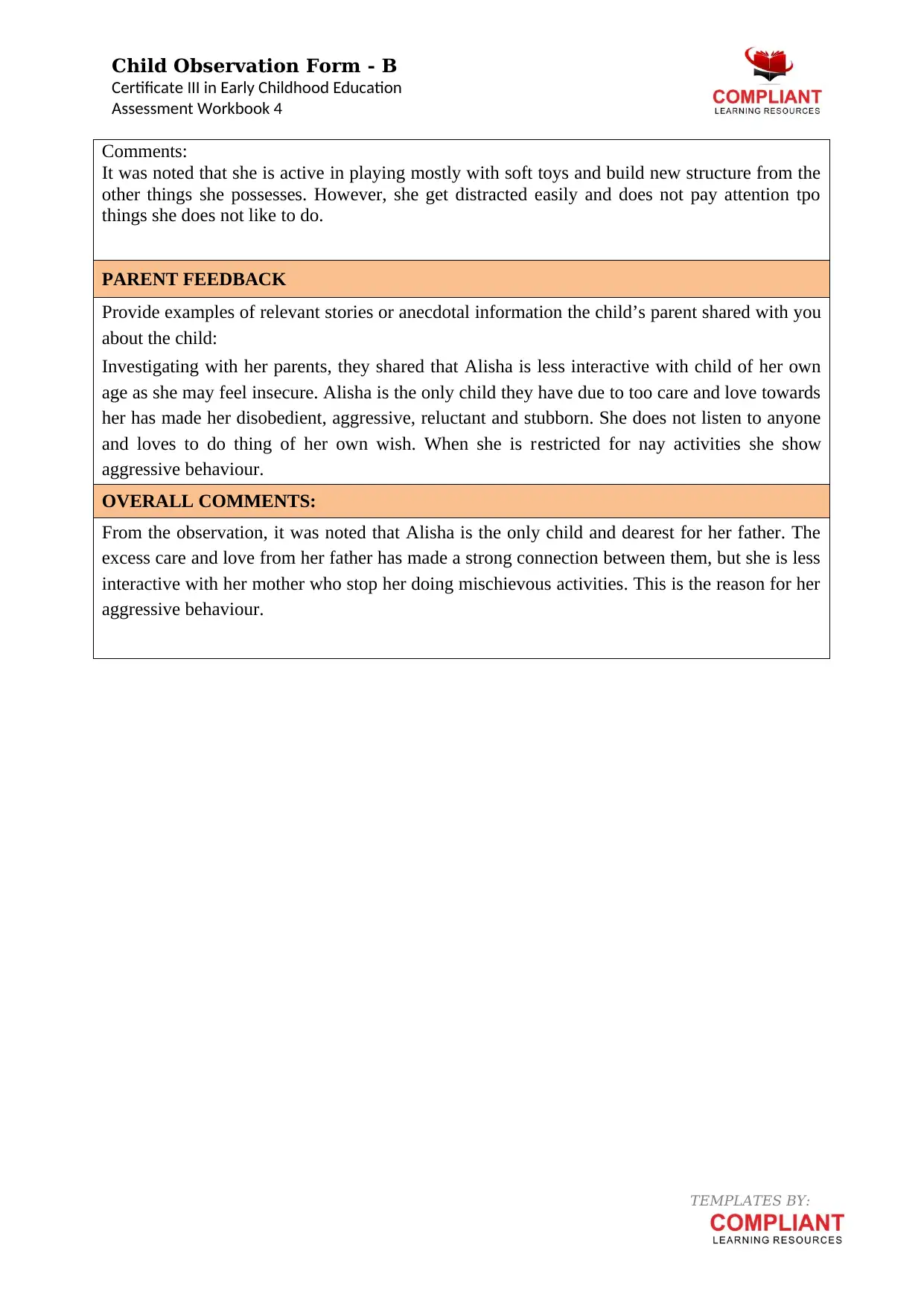Child Observation Form - B Certificate III Early Childhood Education
VerifiedAdded on 2022/09/18
|3
|757
|17
Practical Assignment
AI Summary
This assignment presents a completed Child Observation Form B, part of a Certificate III in Early Childhood Education. The form details observations of a 2-year-old child named Alisha, focusing on her interaction skills, language skills, and play. The observation notes Alisha's strong attachment to her father and her communication style, which includes both verbal and non-verbal cues. It also highlights her constructive play and the parent's feedback regarding her behavior, including her reluctance to interact with peers and occasional aggressive tendencies stemming from being an only child who receives excessive care. The overall comments suggest that Alisha's close relationship with her father and less interaction with her mother contribute to her observed behaviors. Desklib provides this assignment as a study resource, offering solved examples and past papers for students.
1 out of 3



